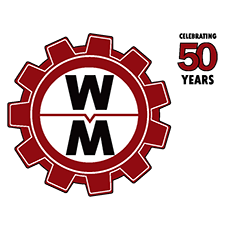Your shop has an old press brake, and you’re not sure what to do. You could sell it and replace it with a newer model, but do you have the capital to put towards that investment and the time needed to effectively make the switch? Retrofitting an existing press brake can be a cost-effective way to reduce set-up time, boost production, and generate returns.
In an earlier blog, The Fabricator outlined a few steps to help shops assess the condition of their current press brakes and decide what to do next. We’ve summarized them into three key points, so keep reading to learn more.
1. Evaluate the Condition of the Components and Your Machine
Hydraulic, Electric, and Mechanical Components
There are four you need to focus on—ram, pedestal control, backgauge control, and press brake control:
- Is your ram still consistent, accurate, and level on each side? If you are still producing proper results, a retrofit may be ideal for you.

- Does your foot pedal (pedestal control) still work? Sometimes retrofits can be carried out using replacement logic boards. Other times they can’t, which is why it’s important to do your research in advance.
- Does your backgauge control need to be replaced? Reusing the mechanical structure and replacing the controls can help you get more out of your existing press brake.
- Does the functionality come through a programmable head? Is it necessary, or can the machine run without it? If your press brake can run manually, basic retrofit interfaces often work.
Want to learn more? Check out the full article from The Fabricator.
The Type of Machine You Have
Next, consider the machine you are working with. With mechanical-style press brakes, a CNC backgauge system can be added, though ram programmability usually cannot. Rocker-style press brakes, by comparison, can be retrofitted with interfaces that deliver programmable speed and positions. Updates for synchro-style hydraulic press brakes often focus on tool libraries and simulations. They can be expensive, though, due to the need for much deeper integration.
2. Identify the Challenges You Are Facing
Determine your shop’s pain points by asking questions like:
- Which method makes the most sense for you, frontgauging or backgauging?
- Do you make frequent tool changes and change die heights often? Incorporating an R axis could make it possible for you alter the height adjustment of the gauge surface for individual bends?
- Do you find yourself manually adjusting ram depth or angle on a regular basis? Adding a Y axis could help you adjust angle and ram depth for each bend.
- Do you handle the same parts and adjust the gauge multiple times? Using the Z 1, Z 2-axis, R axis, Y axis, and Z axis would allow you to increase operator productivity.
- Do operators have the training and skills to pre-program jobs? Some retrofits may enable engineers set up jobs using their computers.
When evaluating your next steps, keep in mind that, although advanced controls can mean big benefits, they also require more planning and time to implement.
3. Implement Your Solution
If your current press brake is still working properly (mechanically, hydraulically, and electrically), but you identify an opportunity to increase productivity, choosing to retrofit it with either a complete backgauge system or just the controls can be a smart and cost-effective solution.
If your press brake is not in good shape, your first step is to figure out exactly how much capital would be required to make it functional again. Once you’ve done that you can find out how much productivity-boosting upgrades would cost. Depending on the outcome, investing in a new press brake may be the most sensible option for your shop.
Case Study: Sureway Tool Pairs the Old with the New
When Sureway Tool installed two new laser cutters in 2011 and 2013, it quickly became clear that its fleet of fifteen older hydraulic press brakes simply wasn’t able to keep pace. Sureway has since adopted a hybrid approach—running eight SafanDarley E-Brakes alongside six of its original hydraulic press brakes.
Having already transitioned to offline programming with its laser cutters, Sureway looks forward to making the same shift for its press brake department, a change that will further increase Sureway’s bending capacity and drive expansion.
Need Help Choosing the Right Press Brake for Your Shop?
It’s important to work with a supplier specializing in metal forming and fabrication machinery like press brakes. These companies will have experienced teams able to address your unique needs. They will also be able to provide you with value-added services including preventative maintenance programs, ongoing technical support, and a diverse inventory of replacement parts to keep your shop’s press brake running smoothly.
Westway Machinery is the Canadian leader in press brakes, proudly distributing SafanDarley electric models and Baykal hydraulic press brakes. Contact us to find out more about our products and services.
Read more:

